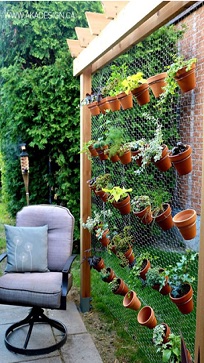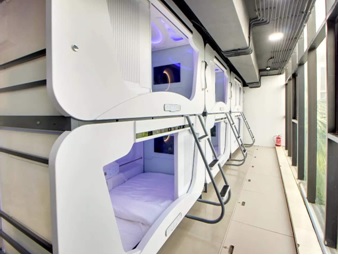



Prof Rasika datar

Smart living trends in big cities encompass a wide range of technological advancements aimed at improving efficiency, sustainability, and overall quality of life. Huge investments are being done in smart infrastructure to enhance public services. This includes smart grids for energy distribution, intelligent traffic management systems, and the integration of technology into public spaces.Here are some key aspects of the smart living trends in big cities:
High-Rise Residential Buildings: In many urban environments, high-rise residential buildings are a common form of vertical living. These structures often accommodate a large number of residents within a relatively small land footprint.Modern urban planning often encourages mixed-use developments, where a single building houses a combination of residential, commercial, and sometimes office spaces. This creates a sense of community and convenience for residents.
Architectural Innovation: Vertical living allows for architectural innovation, with designers and architects creating unique and aesthetically pleasing structures. This may include buildings with striking designs, green spaces on multiple levels, or even buildings with interconnected bridges and walkways. These buildings often incorporate smart building technologies to enhance energy efficiency, security and overall convenience. This can include automated lighting, heating, and cooling systems, as well as integrated security and surveillance systems.
Sustainable Vertical Living: There is an increasing focus on sustainability in vertical living. Green building practices, energy-efficient designs, and the integration of renewable energy sources are common features in many modern high-rise developments.To counterbalance the lack of horizontal space, some vertical living buildings incorporate vertical gardens or green spaces on different floors. This not only enhances the aesthetic appeal but also contributes to environmental sustainability.

Efficient Use of Space: Vertical living allows for efficient use of limited space, both in terms of the building's footprint and the allocation of space within individual units. Clever storage solutions and compact designs are often employed.To foster a sense of community, vertical living buildings often include shared spaces and amenities. This can range from communal gardens or rooftop lounges to fitness centres and common meeting areas.
Accessibility and Connectivity: Vertical living buildings need to prioritize accessibility and connectivity. Elevators, stairwells, and efficient vertical transportation systems are essential for the convenience and mobility of residents.
Challenges and Solutions: While vertical living offers many advantages, it also presents challenges such as transportation, waste management, and potential issues related to the density of occupants. Sustainable urban planning and innovative solutions are needed to address these challenges effectively.
IoT Integration :The Internet of Things (IoT) is playing a significant
role in smart city initiatives. Sensors and connected devices are used for various
purposes, such as monitoring air quality, managing waste, and optimizing energy
consumption.
Vertical living is a significant aspect of urban development in many cities worldwide,
and on-going innovations continue to shape the way buildings are designed and utilized
in densely populated areas.
Capsule Living: Capsule living is an evolving concept, and its acceptance varies across different cultures and cities. It represents an innovative approach to urban housing that addresses the need for affordable, efficient, and community-oriented living in densely populated areas.

Capsule living refers to a housing arrangement where individuals live in compact, minimalist, and often modular units, commonly referred to as capsules. These capsules are designed to provide the essentials of living within a small space. This concept has gained traction in densely populated urban areas where affordable housing and efficient use of space are significant challenges. Capsules are typically small living spaces that aim to optimize every square inch. They often include a bed, basic storage, and sometimes a small workspace. The design is minimalist and efficient, focusing on functionality.Here are some key aspects of capsule living in cities:
Modular Design: Capsule living often involves modular design, where individual units can be combined or stacked to create larger living spaces or accommodate different needs. This modular approach allows for flexibility in design and space utilization.
Affordability: One of the main attractions of capsule living is its affordability. Smaller living spaces generally come with lower costs, making it more accessible for individuals with limited budgets, especially in expensive urban areas.
Shared Facilities: To compensate for the limited space within individual capsules, many capsule living arrangements incorporate shared facilities. Common areas may include kitchens, bathrooms, and communal spaces, fostering a sense of community among residents
Co-living Spaces: Capsule living is often associated with co-living arrangements. Residents share not only facilities but also the overall living experience. This can create a sense of community and social interaction.Capsule living is seen as a solution to urban density issues, providing a way to accommodate more people within limited urban space. It is particularly relevant in cities where housing shortages and rising costs are prevalent.
Focus on Minimalism: Capsule living encourages a minimalist lifestyle, promoting the idea of decluttering and focusing on the essentials. This philosophy aligns with the growing interest in sustainable and intentional living. Some spaces incorporate smart home technologies to maximize efficiency and convenience. This can include automated lighting, temperature control, and other features that enhance the living experience in a small space.
Short-Term Housing Solutions: Capsule living arrangements are sometimes
used as short-term housing solutions, catering to travellers, students, or individuals
in need of temporary accommodation in urban areas.
Challenges and Criticisms: While capsule living addresses certain urban housing
challenges, it also faces criticism for potential issues related to privacy, comfort,
and the overall quality of life. The small size of the living spaces can be a concern
for some individuals.
Smart Homes and Buildings: The adoption of smart home technologies is on
the rise. Home automation systems that control lighting, heating, and security through
connected devices are becoming more common. In addition, smart buildings with
energy-efficient features are being developed to reduce environmental impact.Big cities
are exploring smart mobility solutions to address traffic congestion and promote
sustainable transportation. This includes the implementation of intelligent
transportation systems, bike-sharing programs, and the integration of electric and
autonomous vehicles.Metro cities often offer a diverse range of culinary options. Food
delivery services and a thriving restaurant scene contribute to a dynamic and
multicultural food experience.
Cities are leveraging big data analytics to make informed decisions about urban
planning. This includes analyzing data on traffic patterns, public transportation usage,
and citizen behavior to optimize city layouts and services.
E-Governance and Citizen Engagement: Digital platforms are being used for e-governance,
enabling citizens to access government services online. Additionally, smart cities are
incorporating technologies to engage citizens in decision-making processes and gather
feedback on urban initiatives.
Cyber security Measures:With the increasing reliance on technology, there's a growing emphasis on cybersecurity to protect the interconnected systems and data that power smart cities.
Smart Street Lighting: Energy-efficient and sensor-equipped street
lighting is a common feature in smart cities. These systems can adjust lighting levels
based on factors such as pedestrian activity and weather conditions, contributing to
energy savings.
It's important to note that smart living trends are dynamic, and on-going technological
advancements keep on changing these concepts
For contributing articles for the blog mail to darshan.bagade@imdr.edu